What is a smart city, and what are the most futuristic smart cities in the world? The one thing that all smart cities aspire to do is to create better experiences for citizens. Whether this is through systems that conserve resources such as energy and water, improve mobility and other city services, or enhance safety and security, IoT infrastructure is at the center of it all. We selected 10 cities that we consider the most futuristic based on the extent of their large-scale implementations of IoT infrastructure.
When selecting our top 10 most futuristic smart cities, we considered the innovative applications of common IoT-enabling technologies such as 5G, AI, sensors and communication-associated hardware and software. In this article, we will share our IoT-centric perspective on the smartest cities in the world and why we selected them. Continue reading to learn more about several examples of smart cities in the world.
Smarter cities demand smarter devices. Explore Digi’s industry solutions for smart cities.
What Makes the Most Advanced Cities in The World Smart?
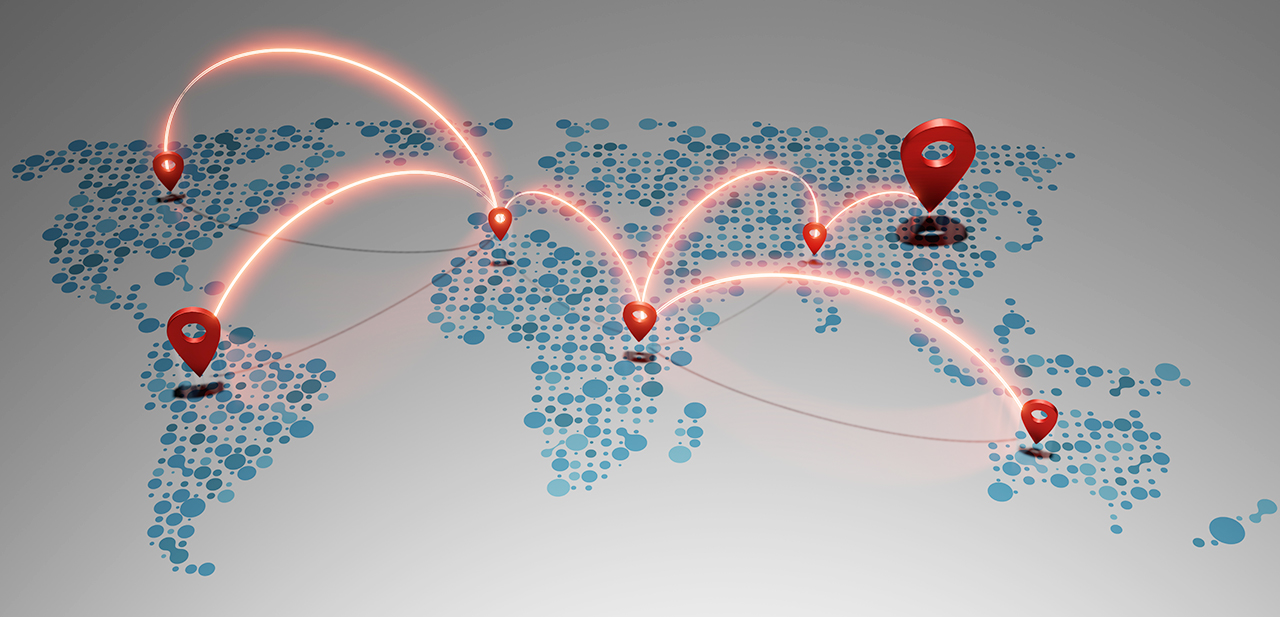
The most advanced cities in the world aspire to have every device, building and vehicle connected using IoT technology. The reasons are vast, and include monitoring resources to improve efficiency; reducing traffic accidents and pedestrian fatalities; enabling mobility and improving public transit and ride sharing; and making buildings smarter and more efficient. In other words, the most futuristic smart cities worldwide use technology to improve the lives of citizens. These technologies already power many developed cities in the world, but any city can become a smart city with the right vision and partnerships.
Technology Used in Smart Cities
What makes a city smart? Most technologically advanced cities have one thing in common. They use technology to provide more and better services to citizens. Increasingly, smart cities also include initiatives that improve sustainability through environmental monitoring, energy and water-saving devices. They even use more renewable energy solutions. Most smart cities include:
- Green Technology — In a smart city, green technologies include solar charging, wireless monitoring, smart waste bins, green buildings that maximize energy efficiency and even electric vehicles
- Traffic Management — A combination of sensors, cameras and IoT communication devices make it easier to check traffic and road conditions in real-time
- Intelligent Lighting Controls — Smart lighting controls use sensors to illuminate only when people or cars approach, saving significant energy compared to traditional streetlights
- Water & Wastewater — Smart cities use technology such as hardware, software, automation and data analysis to help utilities detect and resolve water and wastewater management problems
- Security — From cybersecurity to crime prevention, smart cities rely on secure data platforms, video surveillance and secure hardware devices to detect and combat bad actors
- Emergency Response — From optimized routing for a faster emergency response to CCTV cameras sharing real-time footage with call centers, rapidly advancing IoT technologies promise to reimagine emergency response in smart cities
Interested in smart cities? Read our list for the top 12 Smart Cities in the US.
Top 10 Smart Cities in The World
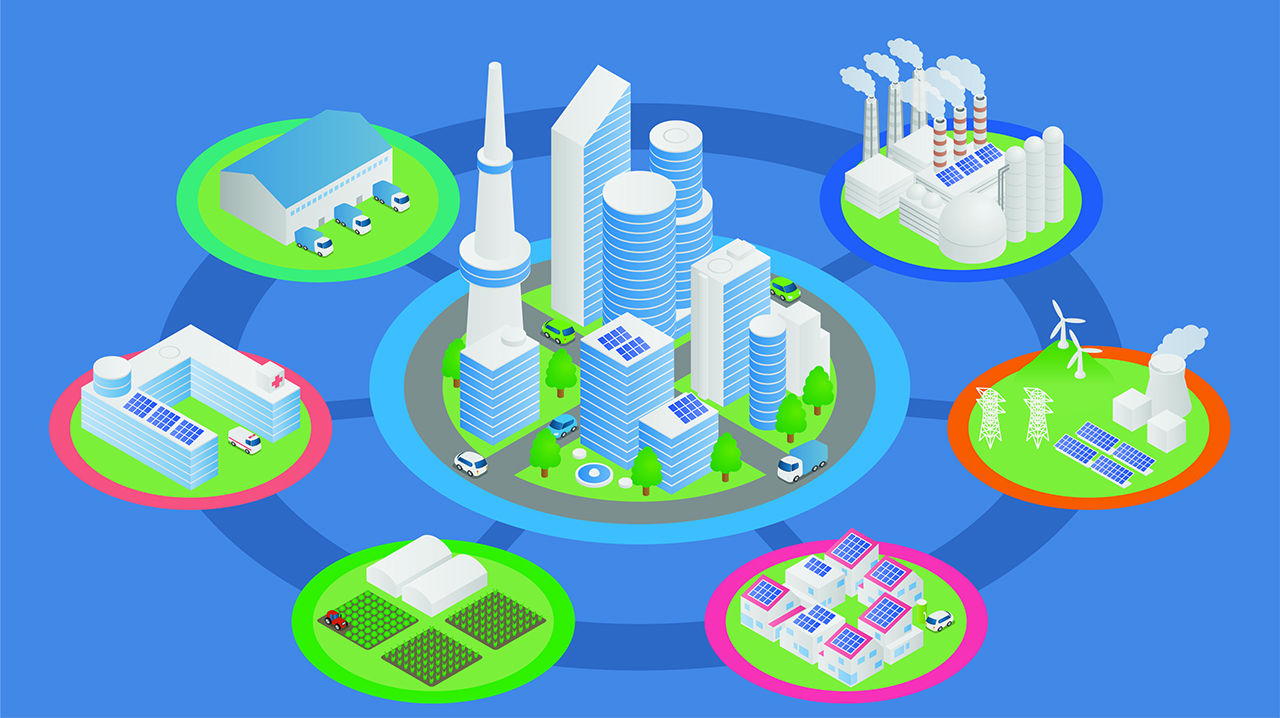
Experts estimate that by 2040, 65 percent of the world's population will live in cities. That means a lot more emissions, water and energy usage and waste. Thanks to a combination of smart technologies such as sensors, wireless networks and communication devices, cities can develop entire smart systems to automate, manage and optimize important city services and utilities.
Cities that have implemented these smart systems to track and manage traffic, air quality, energy usage and waste and recycling systems and more. There are several top smart city lists created by different organizations. Most rank cities based on factors that include some combination of economic, human capital, technology, sustainability, social cohesion, transportation, leadership and urban planning. For example, the IESE business school at the University of Navarra ranks cities based on all these factors. The Institute for Management and Development in partnership with Singapore University for Technology and Design ranks cities primarily based on economic and technological data.
Many of the cities on these lists also landed on Digi’s top 10 smart cities in the world 2023 list. Yet, our ranking also heavily considers innovative thinking, large-scale deployments of smart city technologies and the visions these cities have for using IoT technologies to improve the lives of their citizens now and into the future. The smart city project examples highlighted in this article reflect the diversity of applications of technologies used in smart cities.
1. The Smartest City in the World: London, England
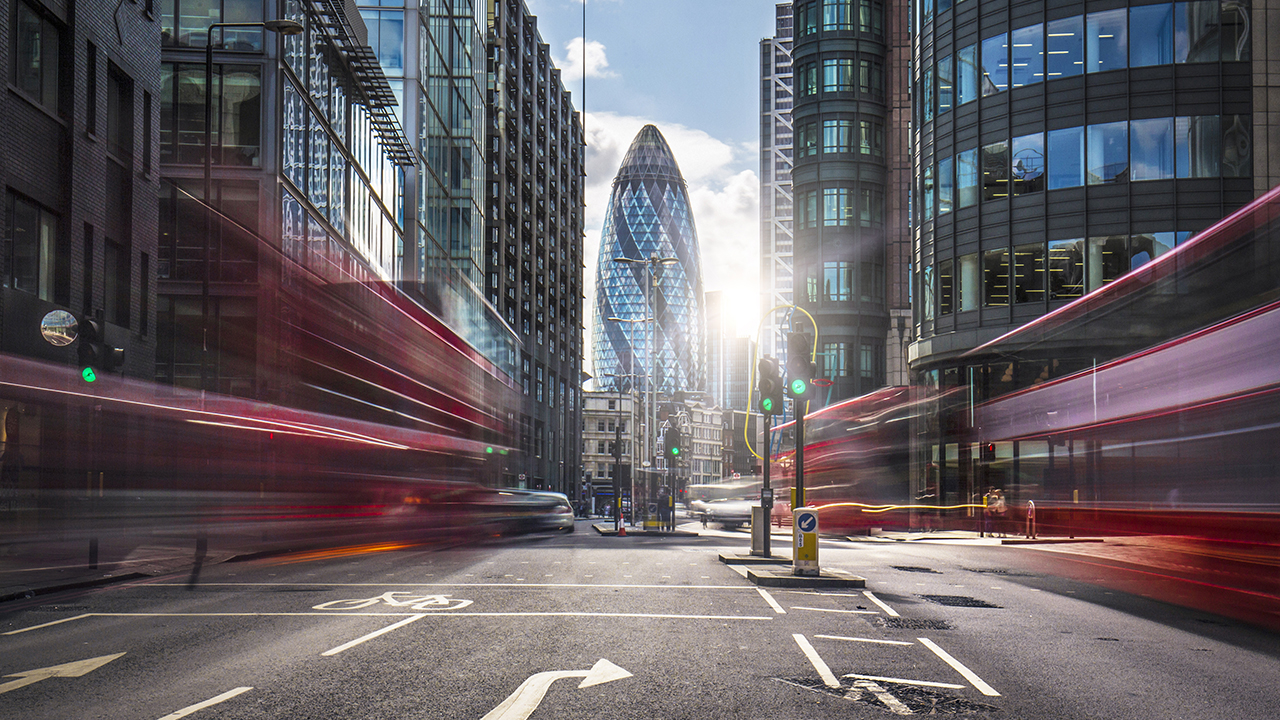
London is a tech hub in Europe, so it is not surprising that it is one of the smartest cities in the world. It has twice as many AI industry suppliers as Berlin or Paris and a third of all Europe’s “unicorn companies.” In 2017, the city launched a program to provide 5G connectivity to the entire city. In 2021, the city kicked off an initiative for high-speed mobile connectivity from a full-fiber network to provide London's homes and businesses with faster internet connections.
Other initiatives that make London the world's smartest city:
- As of February 2023, London has more EV charging stations than any other city in Europe or the U.S.
- London implemented Heathrow Pods, a driverless rapid transit system that connects the city with the airport
- A smart meter program implemented throughout the city and beyond provides smart meters to anyone who requests one
Get the White Paper
Learn how transit operators can deploy IoT transportation strategies for smarter, more efficient operations
Download PDF
2. Zurich, Switzerland
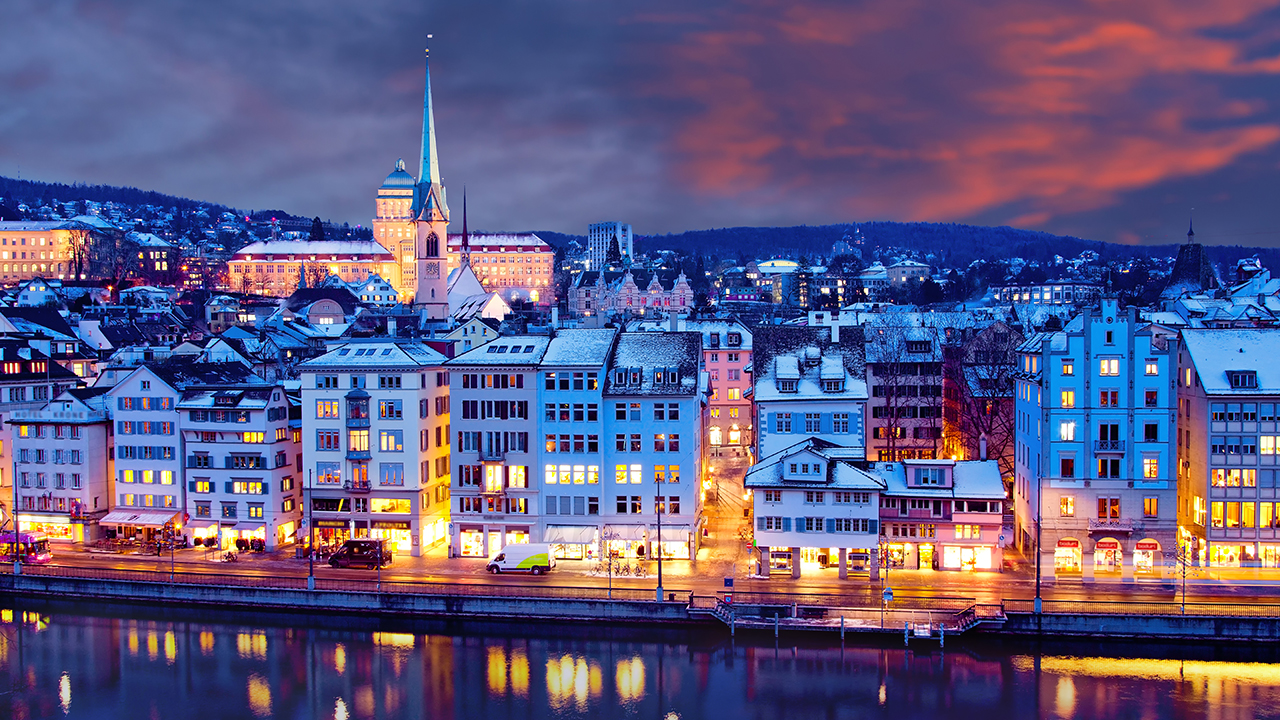
For Zurich, it all started with smart streetlights. Since 2017, these smart streetlights illuminate based on traffic density, reducing energy by 70 percent. But they do more than light the way. These streetlight poles can also charge electric cars, collect environmental data, measure traffic flow and even provide public Wi-Fi. It can also help visitors spot free parking spaces and send an alert when a garbage can is full. Beyond streetlights, Zurich’s Green City demonstration project now has at least 13 buildings using only renewable energy.
Learn how intelligent lighting controls go way beyond lighting.
3. Taipei City, Taiwan
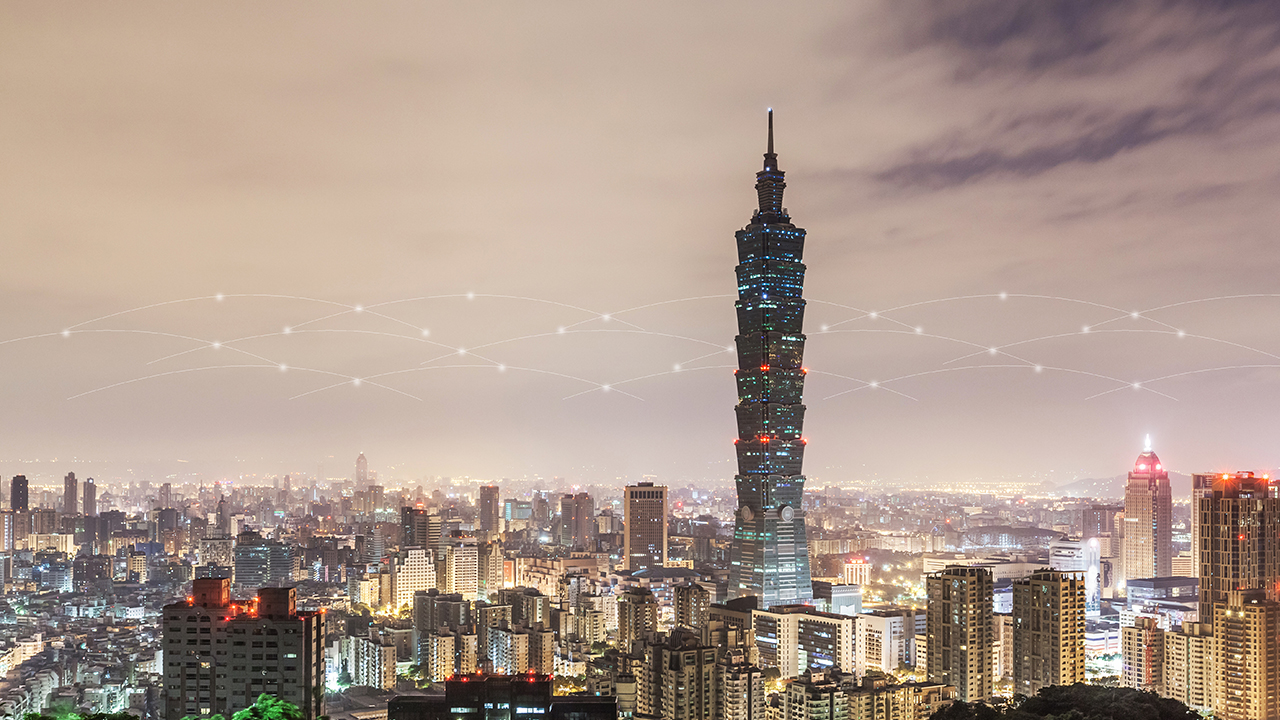
Taipei makes our list for several reasons. First, it has built a robust digital and physical infrastructure. In 2016, it created the “Taipei Smart City Project Management Office” to enable private-public collaboration on smart city projects. In 2021 Taipei ranked second in Asia and fourth globally in the IMD Smart City Index.
High mountains around Taipei trap air pollutants within the city, creating serious air quality issues. Thanks to an air quality monitoring program within the city, sensors send automated messaging and traffic route alerts to warn citizens and reroute traffic in areas with poor air quality. AI-based traffic light surveillance system also helps improve traffic flow while also reducing concentrated areas of air pollution by reducing idling times during the rush hour.
Here are a few other notable futuristic, smart city applications underway in Taipei:
- WeMo, a private company, collaborated with the city to launch an electric scooter-sharing system to further improve the city’s mobility
- A real-time smart trash management system uses a digital map that notifies waste collectors when containers are full
- The EasyCard is a smart citizen ID card that provides access to trash sorting incentives, medical care, voting, public transport and e-learning and can manage the card through smartphones
IOT connects smart cities of the world in new ways; explore more IoT Applications in Smart Cities.
4. New York City, USA
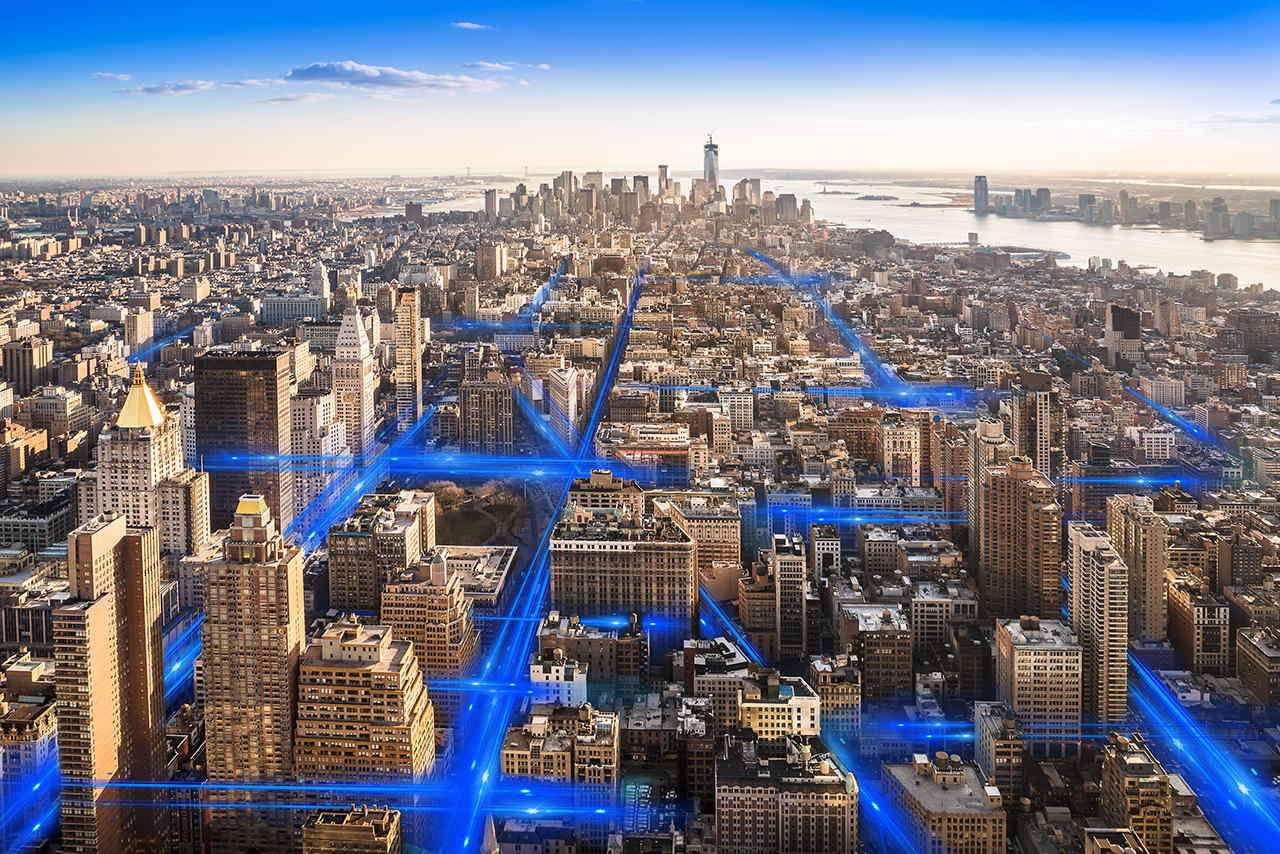
New York City has one of the largest populations in the U.S. and is one of the most densely populated cities on the planet. It is also constantly adopting smart technologies that improve services for its citizens. That puts it high on the list of the most futuristic smart cities in the world for 2023. In 2020, Digi partnered with the New York City Department of Transportation to dramatically upgrade its wireless infrastructure network to enable intelligent traffic management systems. Best of all, this solution integrates to improve safety. Its innovative connected vehicle pilot program relies on vehicle-to-vehicle, vehicle-to-infrastructure and infrastructure-to-pedestrian communications to alert drivers and reduce crash-related injuries.
Here are a few other current smart infrastructure projects New York City is driving:
- A large-scale automated meter reading system helps reduce water consumption by warning customers when it detects abnormal consumption and has already saved more than $73 million
- Hundreds of smart sensors across the city manage services such as LED indoor farming, air quality monitoring and traffic flow
- The city repurposed phone booths as Wi-Fi and online charging stations across the city
Smart city traffic management solutions pave the way for the future of transportation. Download the white paper to learn how to prepare your city.
5. Barcelona, Spain
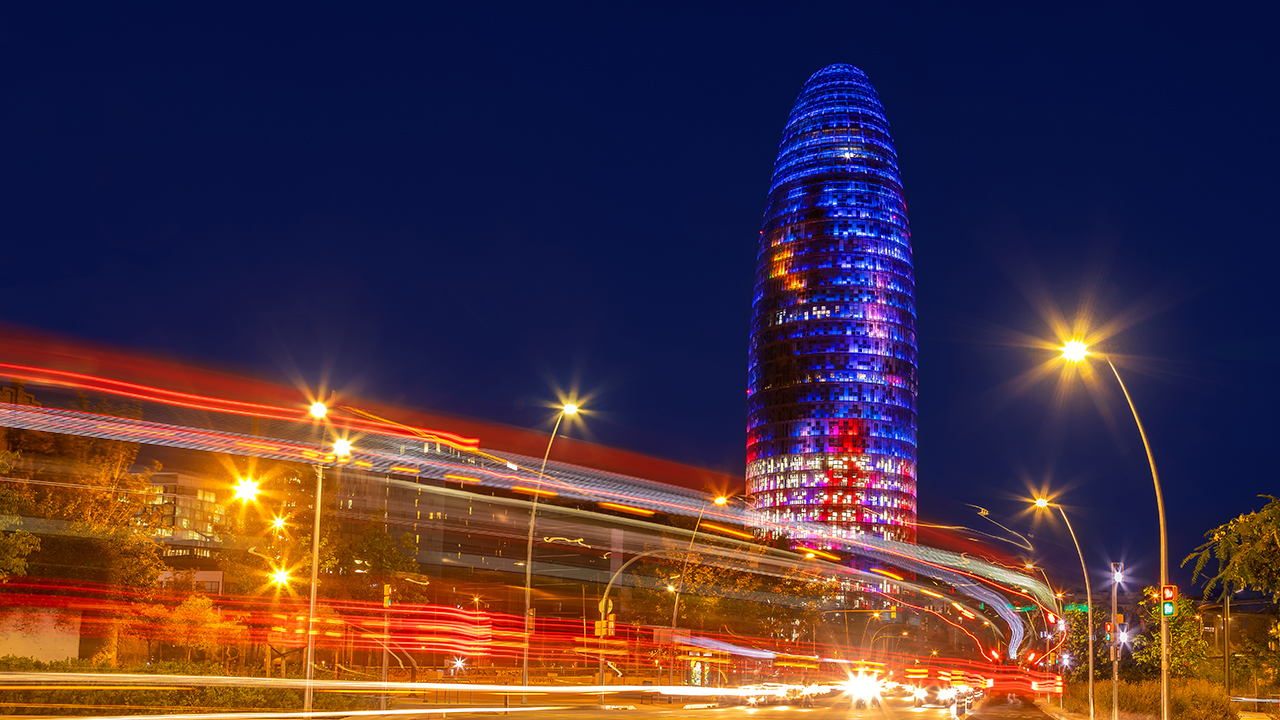
Barcelona is a major European city and tourist destination that has been utilizing smart city technology for over a decade. It really got started back in 2015 when the city began transforming its network and developing its 5G infrastructure. Barcelona’s futuristic vision allows it to plan for things such as self-driving 5G buses and AI-enhanced live video streams to spot crime. As a tourist area, Barcelona plans to adapt its 5G strategy to manage network capacity in crowded areas such as its beaches. Of course, this forward-thinking city continues to launch citizen-friendly IoT-powered applications such as waste management, smart streetlights, public transportation, and parking spaces.
Some of Barcelona’s other smart city applications include:
- AI-powered drones provide security while ensuring privacy by relaying real-time information without recording footage or using facial recognition
- Free Internet access is available across the city with thousands of Wi-Fi hotspots so citizens can tap into the many technology-enabled services
- Sensors embedded into streets connect to an online payment system that alerts drivers to available parking spaces
Learn about secure mobile network connectivity for public safety.
6. Singapore
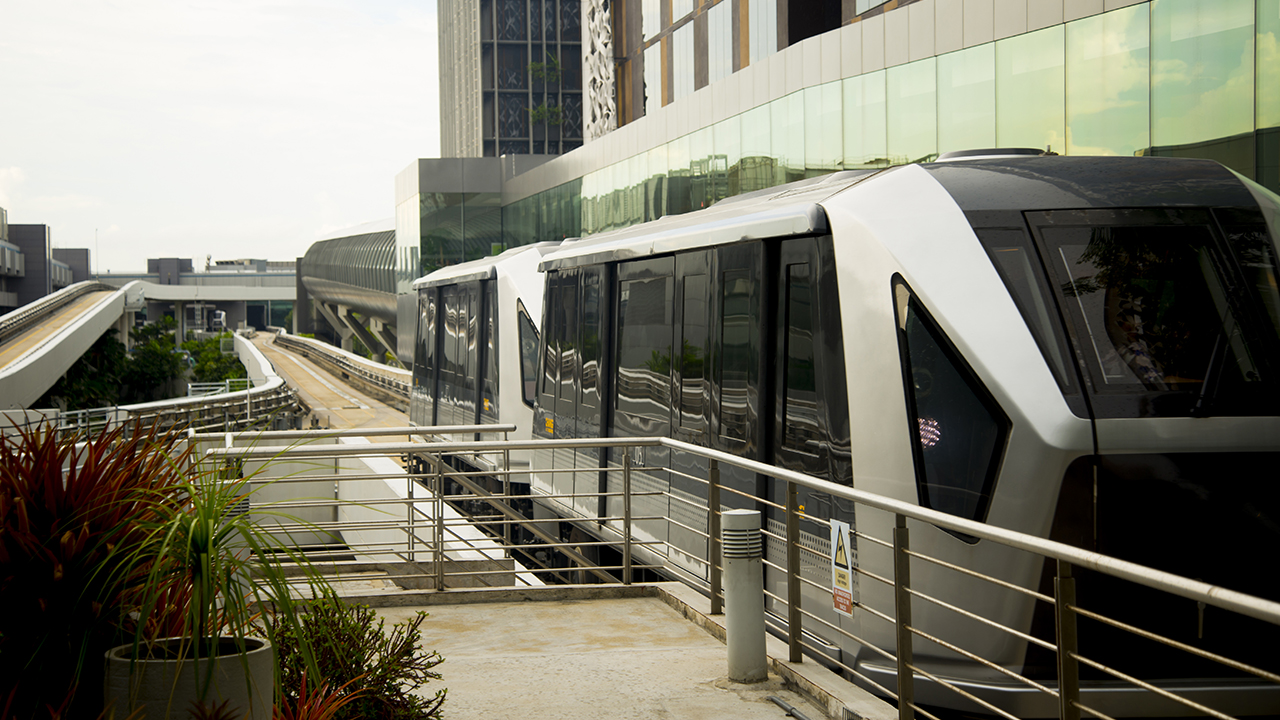
This small Southeast Asian city-state is just 276 square miles but is home to 5 million people. It is also one of the most innovative places in the world. And to back up its reputation, Singapore aims to ensure that all cars on city streets are autonomous by 2025. Already, the National University of Singapore students can catch a ride across campus on a self-driving shuttle. Elderly and disabled citizens can take advantage of an autonomous fleet of driverless shuttles to get around medical complexes. And to clear the way for autonomous vehicles, Singapore has added a real-time toll rate system that uses traffic conditions to adjust rates and manage traffic flow.
But Singapore’s smart city infrastructure goes well beyond driving. Consider these other futuristic smart city applications Singapore is considering for its citizens:
- A network for flying drones that can deliver packages, letters and even messages
- Self-driving wheelchairs designed for integration into the traffic system reaffirm Singapore's commitment to being one of the most accessible cities in the world
- A robot workforce that began out of necessity during the pandemic now operates at construction sites, the National Library, train stations, and even coffee houses
Learn about intelligent transportation and emergency preparedness for smart cities.
7. Paris, France
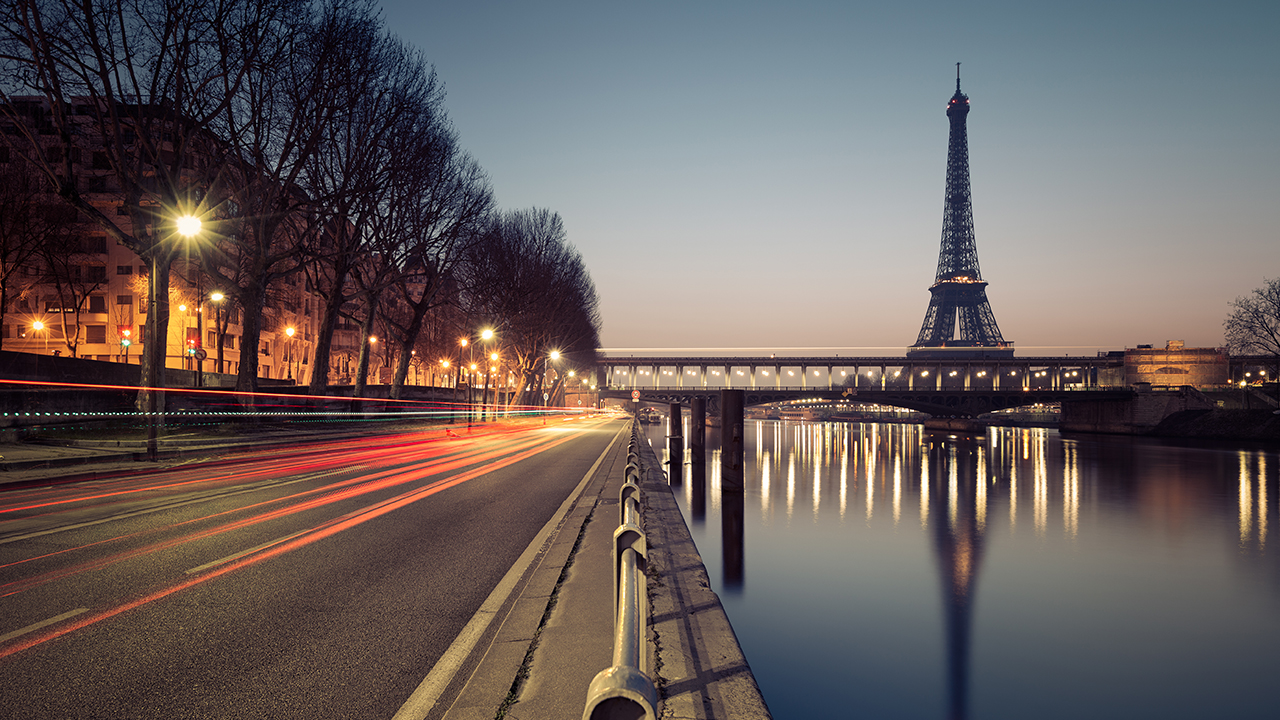
Paris boasts fine cuisine and famous museums such as the Louvre and the iconic Eiffel tower. But Paris also ranks among the top global smart cities because of its extensive deployment of IoT devices. For example, Paris deployed digital applications to help manage water, transport, energy and waste management systems. The Paris Smart City 2050 initiative created 8 impressive prototypes involving green buildings. These buildings generate net positive renewable energy that sends excess energy back to the grid.
A few other initiatives that make Paris a futuristic smart city include:
- Smart park benches installed in city parks watch traffic and help officials manage crowds
- This city of lights has over 280,000 connected streetlights that create 70 percent savings on energy costs
Learn about smart grid applications for smart cities.
8. Oslo, Norway
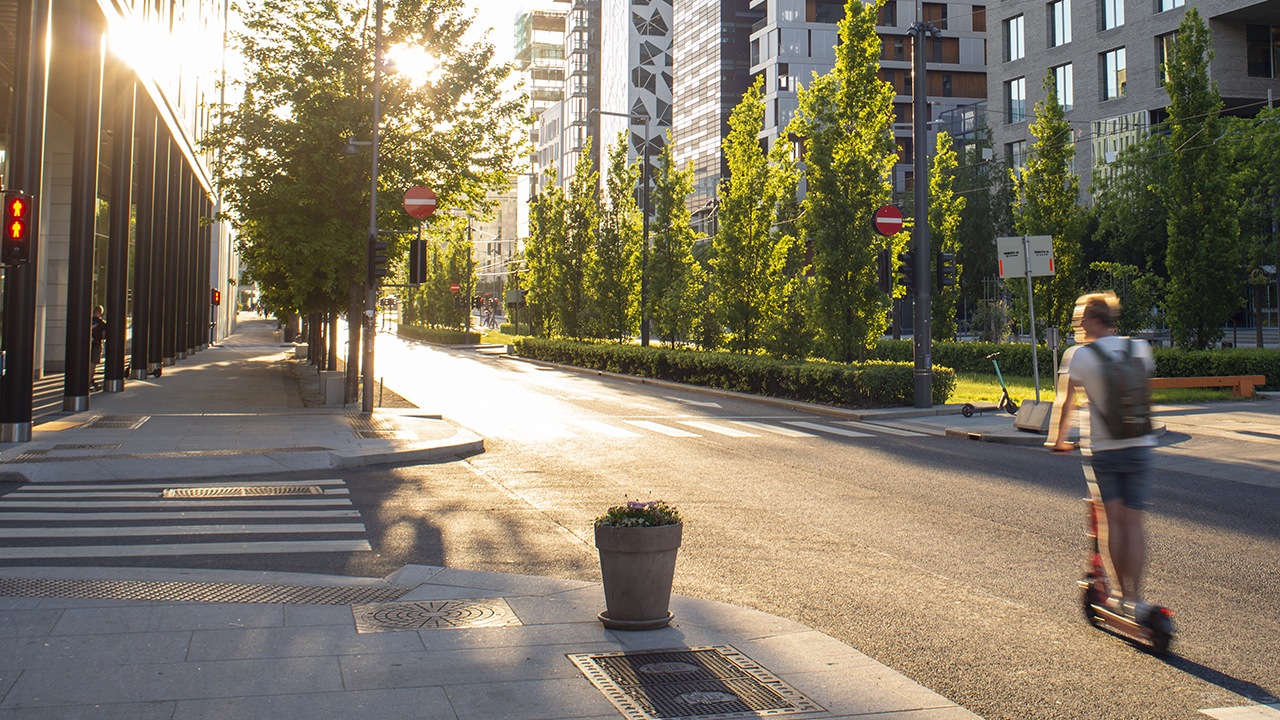
Oslo, Norway makes our list of the top most futuristic smart cities because of its massive effort to achieve net zero carbon emissions by 2030. Already, the city has deployed electric buses, trams and ferries powered by an electric grid fueled mostly by renewable energy sources. By 2025, Norway plans to register only zero-emission cars. Right now, Oslo has the most electric, hybrid and alternative fuel vehicles of any other city in the world. With ambitious plans to cut emissions by 95 percent by 2030, Oslo also ensures that all new buildings meet energy efficiency standards.
Other notable smart city initiatives in Oslo, Norway include:
- In the winter, a waste incinerator plant heats many of homes across the city
- Hydroelectric power makes up about 60 percent of Oslo’s energy consumption
- By 2025, Oslo will require all construction sites commissioned by the city to have zero emissions
See use cases for connected vehicle technology.
9. Amsterdam, Netherlands
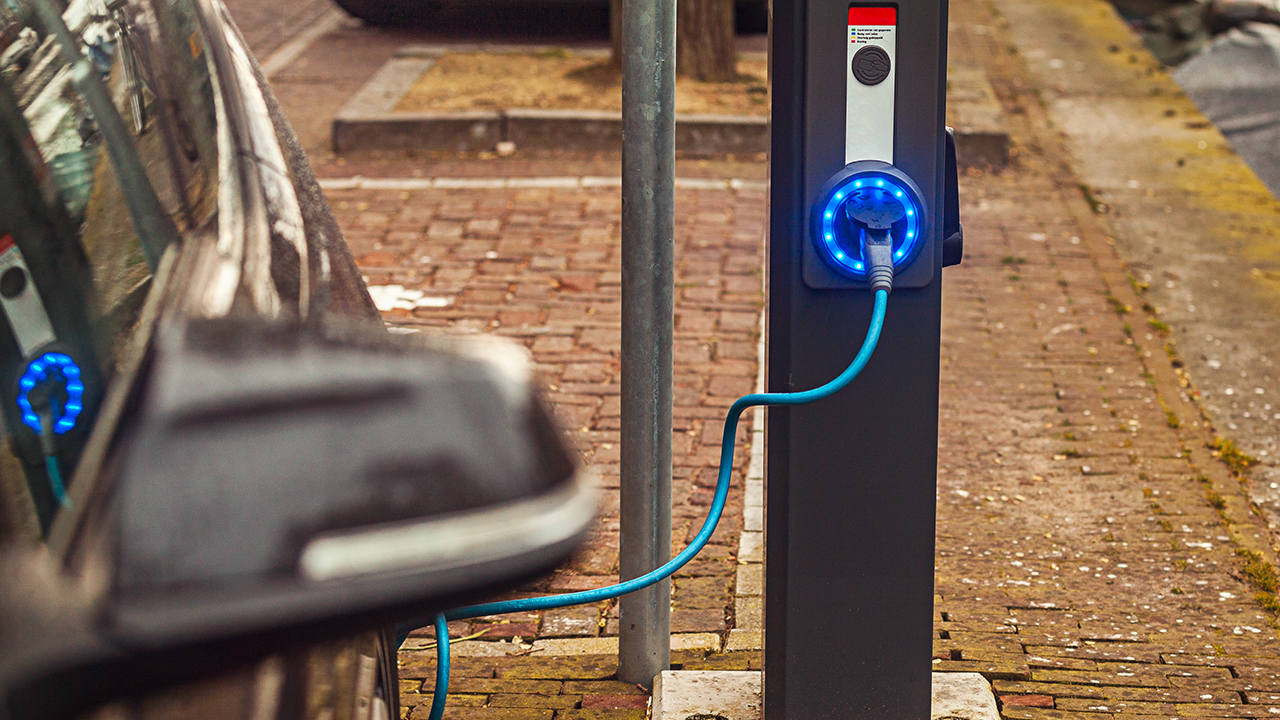
Amsterdam’s CleanMobilEnergy is a smart energy system that combines multiple renewable energy sources, storage technologies, electric vehicles, and energy consumption optimization into a single smart energy management system. Amsterdam hopes to dramatically lower CO2 emissions and increase the economic value of renewable energy. The town is even exploring digital twins to help residents create change scenarios before they happen, strengthening their interest in participating meaningfully in the design process.
- In 2022, Amsterdam won a smart cities award at the Smart City Awards event. The Hackshield project gamified cybersecurity threats to raise public awareness of online safety and security.
- In 2021, the Netherlands Police started participating in a test for the Responsible Sensing Toolkit — an ethical solution to control weapons in public places.
- Smart streetlights save energy, collect important information about individuals in the area, and measure air quality and sound level.
As cities increasingly rely on sensors and wireless communications to transform to smart cities, cybersecurity threats increase. Learn about security solutions.
10. Surat, India
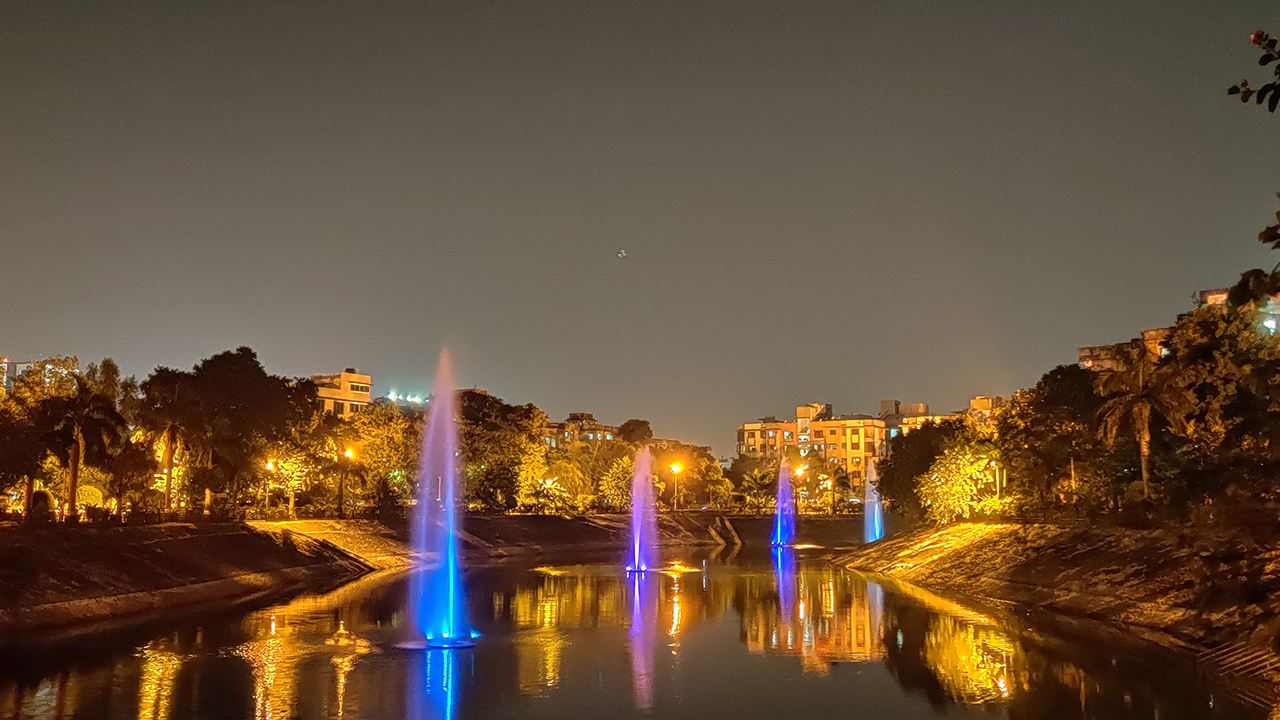
India is one of the most climate-impacted countries in the world and is also set to overtake China as the most populous. That makes climate change a priority issue for India. Surat, located in the western state of Gujarat, is one of the world’s fastest-growing cities between 2019 and 2035.
It is also the smartest city in India from a sustainability perspective. In fact, in 2020, Surat received the UNESCO Nextexplo Smart Cities Award for its sustainability efforts. Its smart water meters aim to end water storage that can lead to water-borne diseases while also reducing waste through leak detection. Smart streetlights reduce energy consumption and make it easier to track and manage consumption. Best of all, 10 percent of its electricity consumption comes from renewable energy sources. For these reasons, Surat is one of the most innovative smart city examples.
Surat’s proposed pan-city vision includes plans for:
- A smart city control center connected to sensors throughout the city for the coordination and delivery of all civic services
- An integrated traffic and mobility center will allow for real-time location tracking of vehicles so passengers can coordinate travel via mobile devices
- Muti-use contactless smart cards will allow citizens to pay for services such as transport, health, education, food, housing, library and recreational facilities from a single card
Smart cities across the globe focus on incorporating green technologies. Download the solution brief to see use cases.
IoT technologies sit at the heart of the current and future cities of the world. But even the most technologically advanced city in the world needs collaboration, vision, partnership and leadership to bring these technologies to life. That’s how Digi can help.
Digi has over 35 years of experience designing and implementing IoT connectivity. We have the expertise and scalable remote cellular connectivity solutions, embedded communications solutions and infrastructure management solutions to help cities successfully navigate large-scale IoT installations. Let Digi help you become the smartest city in the world.
Next Steps